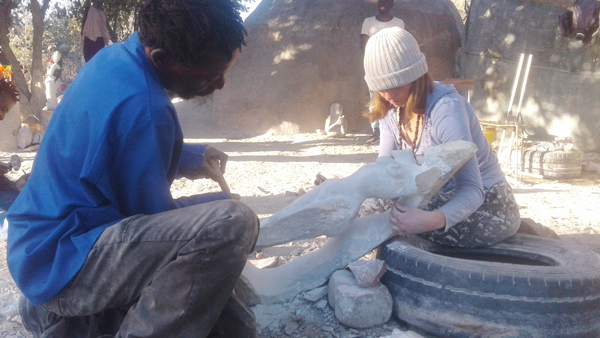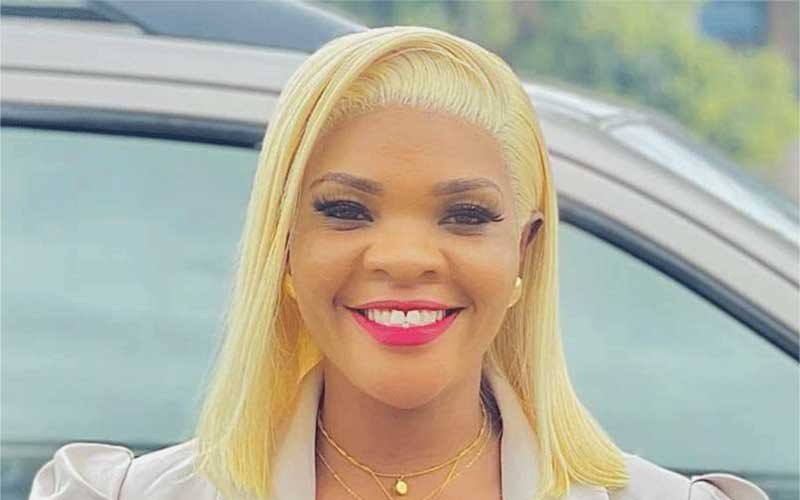
By Moses Mugugunyeki
In 1971, American art historian Linda Nochlin published her essay Why have there been no great women artists? It focused on the institutional obstacles that had prevented women from becoming successful artists, but local award-winning visual artist Rufaro Murenza believes the hindrances can be overcome through empowering women.
Murenza, who boasts of four consecutive National Arts Merit Awards (Nama) nominations, is running a project where he is teaching women — locals and foreigners — the art of stone carving.
The winner of the 3D sculpture category of the 2015 Nama awards told Standard Style from his base at Chitungwiza Arts Centre last week that more women were joining the empowerment programme bandwagon.
Renowned for his sculptures in metal and stone, Murenza said female sculptors have been there from time immemorial, but they fell into posthumous obscurity due to dearth of spaces to showcase their work.
“The idea is to give women spaces so that they showcase their artistic talent,” Murenza said. “Women have been in the cocoon for so long and I saw it fit to break it for them and give them an opportunity to do what men can do. And it is paying off.”
Most of Murenza’s work represents motherhood and the role women play in society. His notable pieces include Mukadzi Wanhasi, Crossing the Water, Mother and Daughter, Chief’s Daughter, Looking to the Heavens, My Fabulous Hairstyle, Dance Around Together, the award-winning Happy Times and Solidarity, which all depict women and motherliness.
“My work has a lot of influence on women as key members of society and I will continue to produce work that appreciates and challenges them to take part in several societal roles,” he said.
- Chamisa under fire over US$120K donation
- Mavhunga puts DeMbare into Chibuku quarterfinals
- Pension funds bet on Cabora Bassa oilfields
- Councils defy govt fire tender directive
Keep Reading
“I am happy that my women empowerment projects have caught the attention of foreigners. I have one American student who is under my tutelage courtesy of a cultural exchange programme.
“She is here for three months and she is happy working with other local female mentees who are part of the programme.”
Murenza uses a mixture of stones, opal and metals to create his artworks.
The 39-year-old sculptor started his craft as an understudy to world-acclaimed sculptor Joe Mutasa at Chapungu Sculpture Park in Msasa, Harare. His maiden foreign exhibition was in 1998 when he went to Belgium.
“That was my debut exhibition and we sold all the pieces and secured many orders. It was an eye-opener for me and from there I never looked back,” he said.
“I have trained my brothers who are now renowned sculptors in their own right and I have mentored a number of women who are now working on their own.”
Lorraine Usayi Mamvura, one of the ladies under Murenza’s tutelage, said she had learnt a lot from the empowerment programme.
“I came here without any idea, but only a passion. I have grasped basics of the trade and I believe when I leave this place, I will be able to work on my own,” Mamvura said.
“I urge my fellow colleagues interested in sculpture to come to the arts centre and get assistance.
“I have seen successful women sculptors here in Zimbabwe and I can soon be one of them.”
Chitungwiza Arts Centre chairman Godwin Madzinga described the arts and cultural exchange programmes with other countries as a boon to the arts centre, home to more than 200 visual artists.
“Over the years, the arts centre has been involved in arts and cultural exchange programmes as we have hosted foreigners while a number of our artists have travelled abroad,” Madzinga said. “These programmes have helped create ties between us and counterparts abroad. We are now known across the globe because of these exchange programmes.
“At the moment, we have two foreigners who are being trained by our guys and we believe they will help us create synergies with their countries.”
Madzinga said Chitungwiza Arts Centre had grown in leaps and bounds since its inception in 1997, with a number of artists from the establishment earning recognition locally and internationally.
Locally, the arts centre was first nominated for Nama in 2008 when Onias Mupumha won in the Visual Arts 3D category.
Mupumha’s award, which was the first for the centre, inspired many of his peers.
Some of the artists from the centre who have been nominated for the Nama include Ishmael Chitiyo (2008), Peter Gwisa (2009), Washington Matafi (2009 and 2013), Rickson Zavare (2009, 2010 and 2011), Antony Ngandu (2014), Richard Mupumha Snr (2014), Murenza (2015) and Shelton Mubayi (2019).
Madzinga said the nominations were a true reflection of the arts centre’s “great work”.
“The nominations bear testimony to the work that we do at the centre,” he said.











